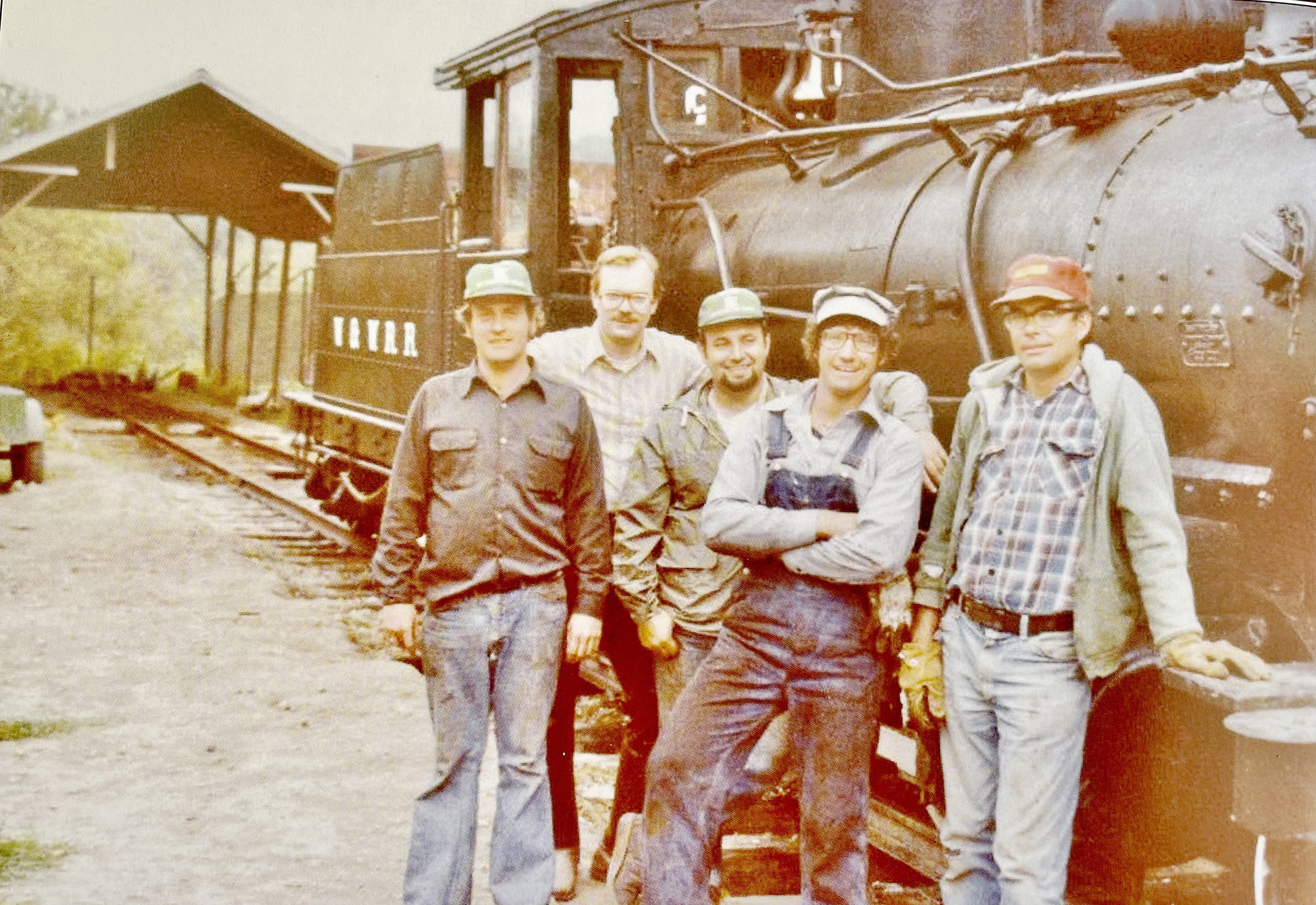Left to right: “Original Waynie Restorers” Tom Kenney, Larry Koehler, Dennis DePetro, Tim Sposato and Bob Brendel strike a pose by the “second No. 4” at the Greene County Historical Society on a bright September day in 1978. This happy crew has every reason to smile. The boiler of the old steam engine has been fired up for the first time since 1927 and by the next month Old Waynie will be huffing back and forth on its 100 feet of track at the 8th annual Harvest Festival, to the delight of all who come to see it.
This photograph from the Sposato collection can be found in Jim Weinchenker’s book Waynesburg and Washington Rail Road – Second Number 4.
It tells the story of the second steam engine that ran the rails from Waynesburg to Washington, Pa. When the line closed in 1933 this engine was not scrapped out, perhaps out of nostalgia as the age of steam gave way to diesel and narrow gauge railroads that served rural America gave way to trucks and busses.
Greene County’s railroad past began on September 10, 1877, when track from Washington had been laid to West Union on the county line. The golden spike was driven on November 1 at Buchanan Station in West Waynesburg and the first run of 28 miles was made between the two county seats. Daily runs started at 5:30 a.m. and passengers could expect to be in Washington in within the hour. For more than fifty years steam was the modern dream in Greene County. The last passenger ride was taken July 6, 1929 and the last freight train left the station in 1933.
Second Number 4 was rediscovered and moved to the Greene County Fairgrounds in 1957, then to GCHS museum when it opened in 1971.
When Tim Sposato and Brad Lester got to work on it in 1977 they found the old engine and its boiler surprisingly intact. After a through cleaning and machining new parts, replacing the wooden pilot, oiling bearings, sandblasting, painting and getting the boiler inspected, Old Waynie was under steam in time for the harvest festival of 1978.
It fired up for the harvest festival of 1979, then retired for two years while the crew replaced all 102 boiler tubes. It was back on track in 1982 and chugged along until “Tim, Brad and Bob moved on and the last time second number 4 had fire in her belly was the annual fall festival in 1985.”
It would be 15 years before Weinschenker met Waynie while visiting the museum and was inspired to become part of a “new group of enthusiasts” who would “take notice of the once proud iron pony.”
If you were at this year’s Harvest Festival, give a round of applause to Weinschenker, Dave Jones, and the rest of the new crew that has continued to do the work it takes to create a world class working museum exhibit that will hopefully breathe fire and belch steam once more.
Weinshenker’s second book is for sale at the museum gift shop but his first book Narrow Gauge in Southwestern Pennsylvania – the Waynesburg and Washington Rail Road has been sold out for years. I found one used copy online for $89.99. Better hurry. There’s only one left!
